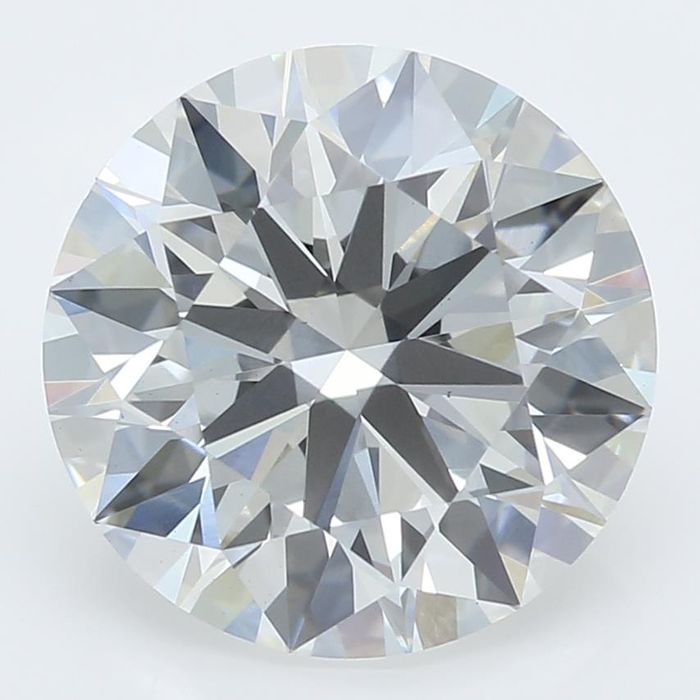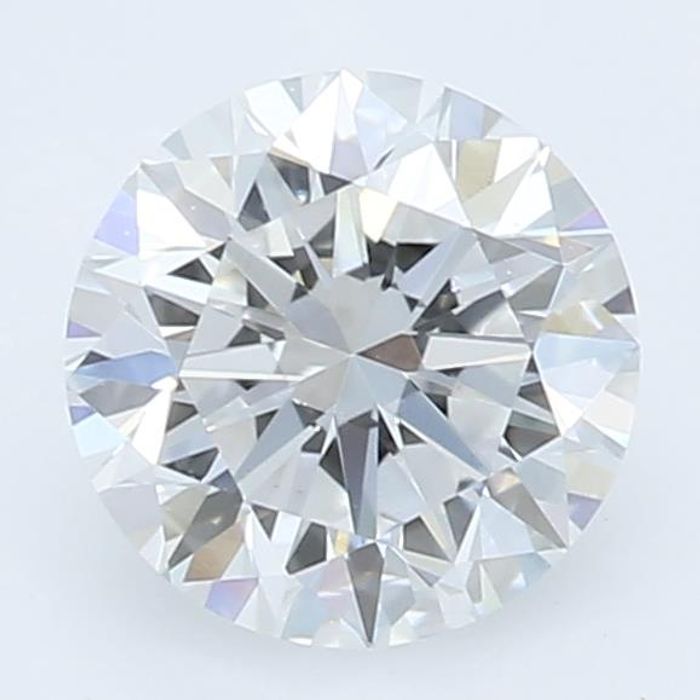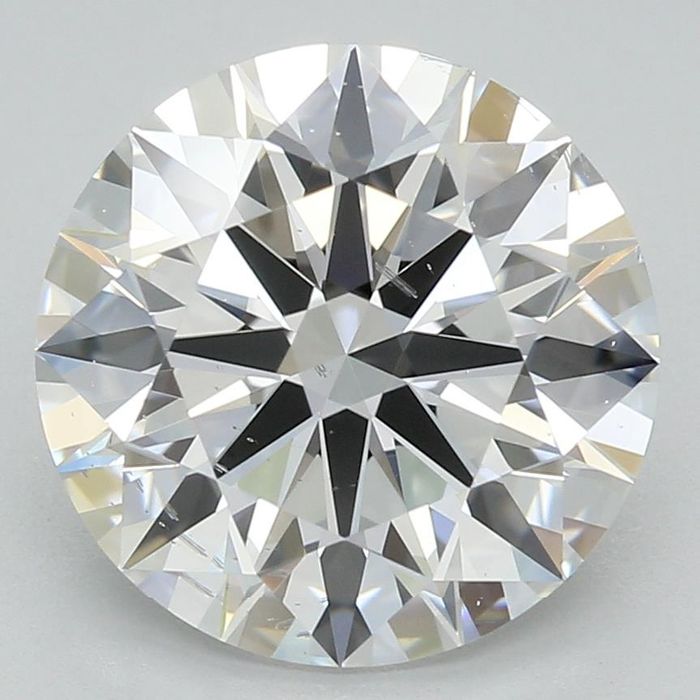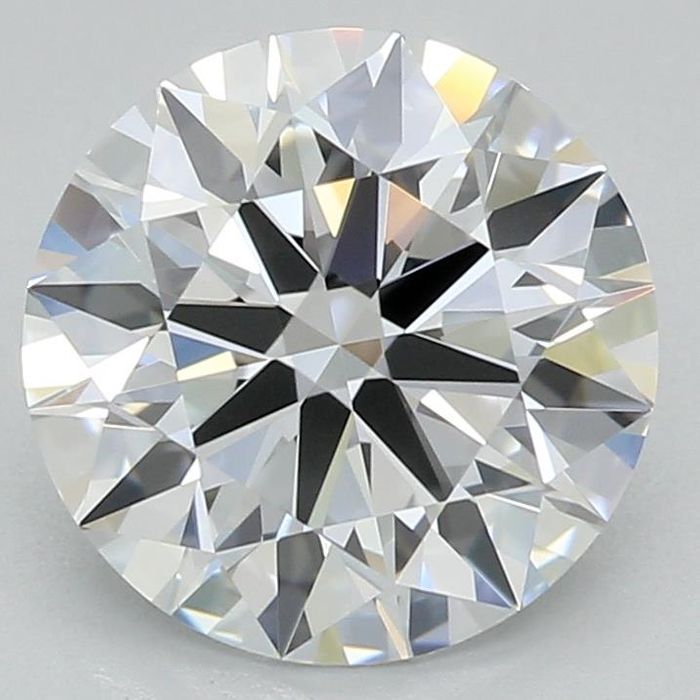Engagement Ring - In Progress
Setting
Stone
Purchase any Engagement Ring and receive a $250 Gift Card for your Wedding Band. Ends soon.
Deepen the well of love in the world.
Round cut diamonds are the world’s most popular diamond shape. In fact, at the time of writing this article, more than 73% of diamonds for sale globally were Round (869,334 out of 1,178,007 total diamonds)! That means that the other nine diamond shapes combined make up only 27% of the diamonds available for sale. Why are Rounds so popular? Because a Round diamond’s ability to optimize light reflection makes it brighter and more brilliant than all other diamond shapes.
Round diamonds are the only diamond shape that the GIA grades for cut. A diamond’s “cut” refers to how well the stone’s angles align, and how perfectly the stone was polished. Cut is the single most important factor when purchasing a Round. This is because how well your diamond is cut determines how sparkly and bright your stone is!
The GIA assigns Rounds with the following cut grades: Excellent, Very Good, Good, Fair, and Poor. We personally only recommend purchasing Round cut diamonds with an Excellent cut rating (or Signature Ideal in lab diamond!). We suggest this because minor mistakes in a diamond’s angles can have a major impact on its sparkle. You can find the below proportions on your GIA Diamond Certificate.
“IDEAL CUT” OR EXCELLENT? – GIA does not recognize the term “ideal,” while some other labs do. This does not mean a GIA stone does not fall within “ideal” parameters, it’s just that their top grade is “Excellent.” To help our couples, we have populated our own “ideal cut” criteria in the table below to help you pick out the best of the best round cut diamonds.
“TOLKOWSKY” IDEAL: Marcel Tolkowsky outlined what most jewelers consider the “ideal cut diamond” back in 1919. The Tolkowsky Ideal is a 34.5 degree crown and a 40.8 degree pavilion, but what is more important is the angle those create together. For every 1.0 degree steeper your crown is, subtract 0.2 degrees from your pavilion (for example: 35.5 crown, 40.6 pavilion). Likewise, for every 1.0 degree shallower your crown is, add 0.2 degrees to your pavilion (for example: 33.5 crown, 41.0 pavilion).
TABLE – The “table” of your stone is the large flat facet on the very top. Larger tables show more white sparkle (or “brilliance”), and smaller tables show more colored sparkle (or “fire”).
DEPTH – The “depth” of your stone is a percentage, resulting from dividing your stone’s width by its depth. Deeper stones look smaller face up, while shallower stones face up larger than their carat weight. However, be careful of stones that are too shallow – they do not sparkle as much. Learn ideal depths below!
Here is the difference between an Ideal cut (which could be certified as Ideal or Excellent) and a Fair cut (which may be certified as Very Good).


Here are our recommendations:
| IDEAL/EXCELLENT | PREMIUM | FAIR | |
| TABLE | 53-57 | 58-59 | 60+ |
| DEPTH | 60-62.5 | 62.5-63 | 63.5+ |
| CROWN/ PAVILION | 34-35.5/40.6-40.8 | 33.5 or 36/40.4 or 41-41.2 | 33 or 36.5/40.2 or 41.4 |
A Round diamond’s color is how white or slightly warm the gem looks. The color scale begins at D and ends at Z. Round diamonds with color grades D, E, and F are “colorless.” Grades G-Z show increasing amounts of warmth. Colorless stones are more rare than near colorless, so they command a higher price. Colorless stones are also in higher demand, which is also reflected in pricing premiums.
The visual difference in color grades one step apart is actually quite difficult to perceive. So, we recommend personally comparing color, instead of immediately rejecting near colorless stones. The color of your ring setting also matters greatly (warm metal colors hides diamond warmth – white metals require higher color)! One final thing to keep in mind is that larger diamonds tend to show color more readily than smaller diamonds.
Here is the difference between an E colored ideal diamond and an I colored ideal diamond:


Here are our recommendations:
| WHITE METAL | YELLOW OR ROSE METAL | |
| >1ct | D-G | D-I |
| 1-2ct | D-G | D-H |
| 2+ct | D-F | D-G |
A diamond’s “clarity” is how crystal-clear the gem is, or how many internal marks (“inclusions”) it has. GIA provides excellent help with their clarity grades. Still, it is important to understand that each customer will have a unique standard for clarity. Some may be perfectly comfortable with an inclusion as long as they cannot easily see it. Others may insist on a more technically flawless appearance.
Most couples look for a stone that is “eye clean.” In other words, a diamond in which the inclusions are not visible to the naked eye. Eye clean clarity is the best value. However, the clarity grade you need to get an eye clean stone depends on its size. We check every conflict free diamond ring we sell and inform our couples if it is not eye clean.
Here is the difference between an SI1 and VVS2 clarity stone:


The following is what we recommend to our couples:
| CLARITY | |
| >1ct | SI1+ |
| 1-2ct | VS2+ |
| 2+ct | VS1+ |
When looking for a Round cut diamond, make sure to maximize measurements within your ideally cut diamond. For example, you can have a 1.0 carat Round cut diamond with measurements 6.36 x 6.42 mm that is ideally cut. However, you could also have a 0.98 carat Round diamond with measurements 6.45 x 6.45 mm that is just as ideally cut, and probably less expensive. All of our Recommended conflict free diamonds have been maximized for size and beauty!
01.
PHOTO & VIDEO - Always ask your jeweler for a detailed picture or video. Look for lively sparkle!
02.
REVIEW THE CERT - Always review the Diamond Certificate to check for ideal proportions. Compare it against our chart above!
03.
INSPECT - Ask the jeweler to pull the diamond and actually visually inspect it. Is it eye clean?
04.
MEASURE - Make sure your Round diamond’s measurements are maximized within your carat size. Don't pay for weight that's trapped in the bottom of the stone that you'll never see!